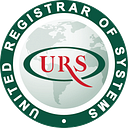Mastering IT Product Testing: A Guide to Quality, Performance, and Security
In the fast-paced realm of information technology, where innovation and speed-to-market are paramount, IT product testing stands as a critical phase in the development lifecycle. It’s the rigorous process that ensures a product not only meets its intended functional requirements but also delivers a secure, efficient, and user-friendly experience.
This blog delves into the intricacies of IT components testing, highlighting its importance, the various types of tests conducted, and how it significantly contributes to the success of IT products in today’s digital landscape.
The Importance of IT Product Testing
IT product testing is not just a step towards ensuring the absence of bugs or errors; it’s a comprehensive evaluation that guarantees a product’s reliability, security, performance, and compatibility. In essence, IT components testing:
· Mitigates Risk: Identifies and addresses issues early in the development cycle, reducing the risk of failures post-launch.
· Ensures Quality: Guarantees that the product meets the high-quality standards expected by users and stakeholders.
· Enhances User Satisfaction: A well-tested product is likely to fulfil user needs effectively, leading to higher satisfaction and loyalty.
· Facilitates Compliance: Ensures that the product complies with relevant regulations and standards, avoiding legal and financial repercussions.
Types of IT Product Testing
The process of IT product testing is multifaceted, encompassing a variety of tests to scrutinize every aspect of the product:
1. Functional Testing: Evaluate the product’s features and functions to ensure they operate according to requirements.
2. Usability Testing: Focuses on the user’s experience, assessing the product’s intuitiveness, ease of use, and overall user interface.
3. Performance Testing: Tests how the product performs under specific conditions, including its response time, speed, scalability, and stability.
4. Security Testing: Identifies vulnerabilities and security gaps that could jeopardize the product’s data integrity and user privacy.
The IT Product Testing Process
The process of IT product testing typically follows a structured approach:
· Planning: Define the scope, objectives, and strategies for testing, including the selection of testing tools and environments.
· Design: Develop test cases and scenarios that cover all aspects of the product’s functionality and user requirements.
· Execution: Perform the tests as per the plan, documenting any defects or issues encountered.
· Analysis: Assess the results of the testing, prioritizing and addressing defects based on their severity and impact.
Challenges and Best Practices in IT Product Testing
IT product testing faces several challenges, including rapidly changing technologies, increasing product complexity, and tight development timelines. To overcome these challenges, adopting best practices is essential:
· Early Integration: Integrate testing early and throughout the development process to identify and resolve issues sooner.
· Automation: Employ automated testing for repetitive tasks to save time, reduce errors, and increase efficiency.
· Continuous Testing: Adopt a continuous testing approach to ensure ongoing quality and performance checks as part of the continuous integration/continuous deployment (CI/CD) pipeline.
· Collaboration: Foster a collaborative environment where developers, testers, and stakeholders work closely to understand requirements, set expectations, and address issues promptly.tpixaway
